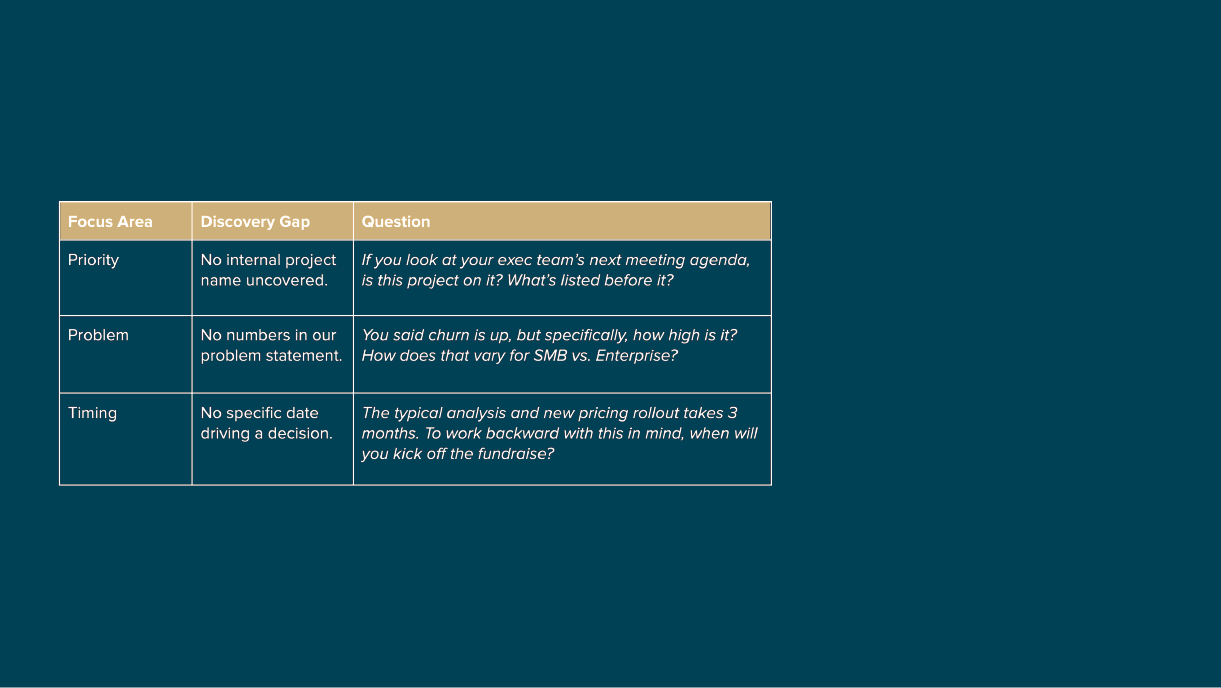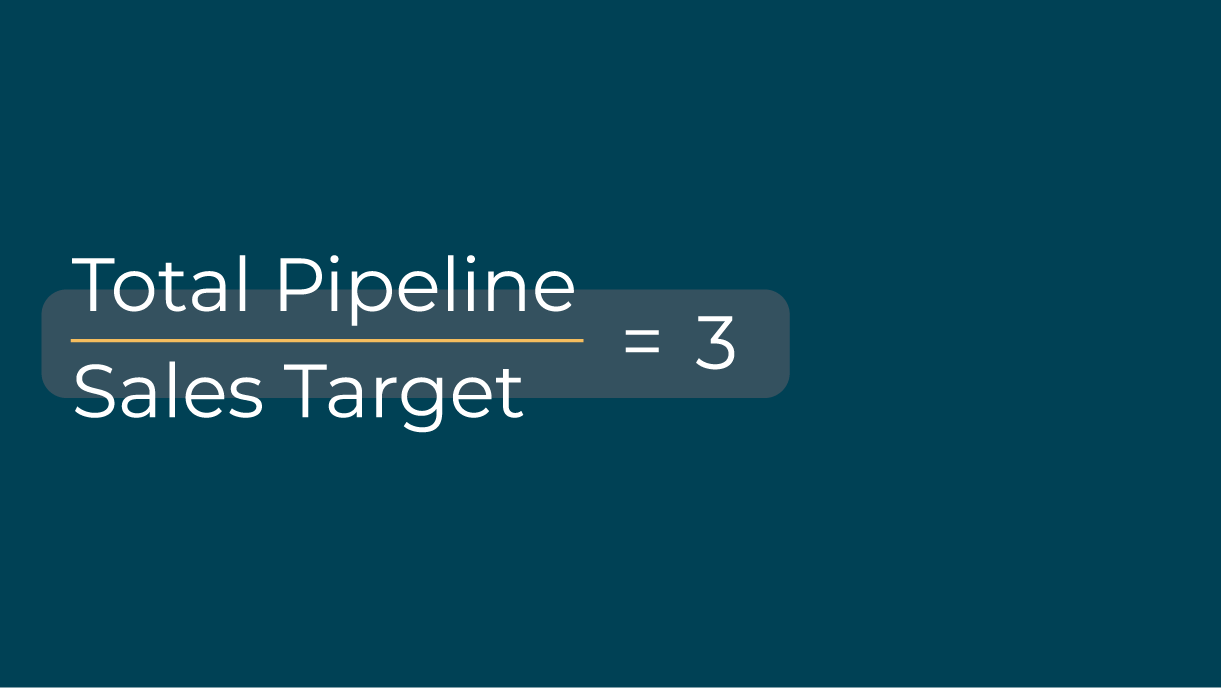Designing a Sale Around Buying Behavior — Two Shifts That Win Deals


The steps you take to sell your product are not the same steps prospects take to buy it.
While there’s some overlap (meetings on your calendar, activities in a Mutual Action Plan), your sales activities represent a fraction of the internal sales process your buyers are leading.
That's right, your buyers are selling too.
More specifically, a handful of buyers — your champions — play an outsized role in closing any complex deal. (The better way to say this is champions close deals, not sales reps.)
To the extent you can increase the overlap between your sales activities, and your champion's internal sales activities, you’ll increase your win rate.
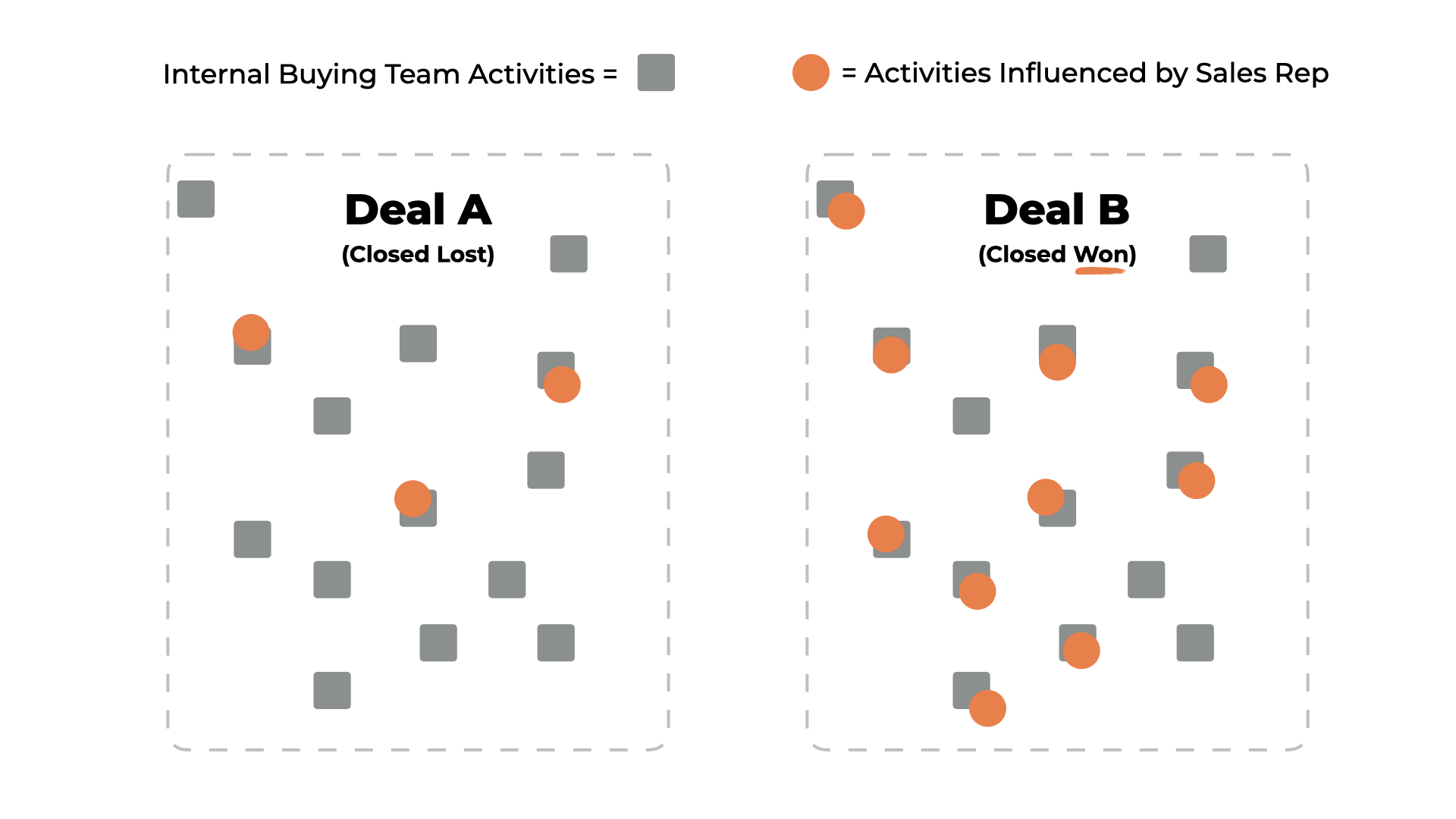
For this reason, the way we think about our sales process should more closely align with, and enable, a champion’s "internal sale." This post unpacks two strategies to help you do this:
- Increasing your overlap with a champion's internal sales activity.
- Designing your pipeline stages around buying behaviors.
Let’s take them one a time.
Increasing Your Overlap With Internal Sales Activities
Your buyers are working to define their problem and align, on average, 10+ people with conflicting opinions on the right to solve it. Sounds a lot like sales, huh?
That’s why the job of a seller, simply put, is to enable buyers.
It’s also why effectives sellers collaborate with their champions early and often. To become a better partner to your champion, look at the sale from their perspective. You'll quickly find that:
- The 'internal sale' isn’t as linear as it seems.
- Buyers measure the sales cycle differently.
Buying isn’t linear. So complex selling isn’t, either.
Compare the basic milestones in a complex buying process with the typical stages in a sales pipeline, and you’ll spot a major difference:
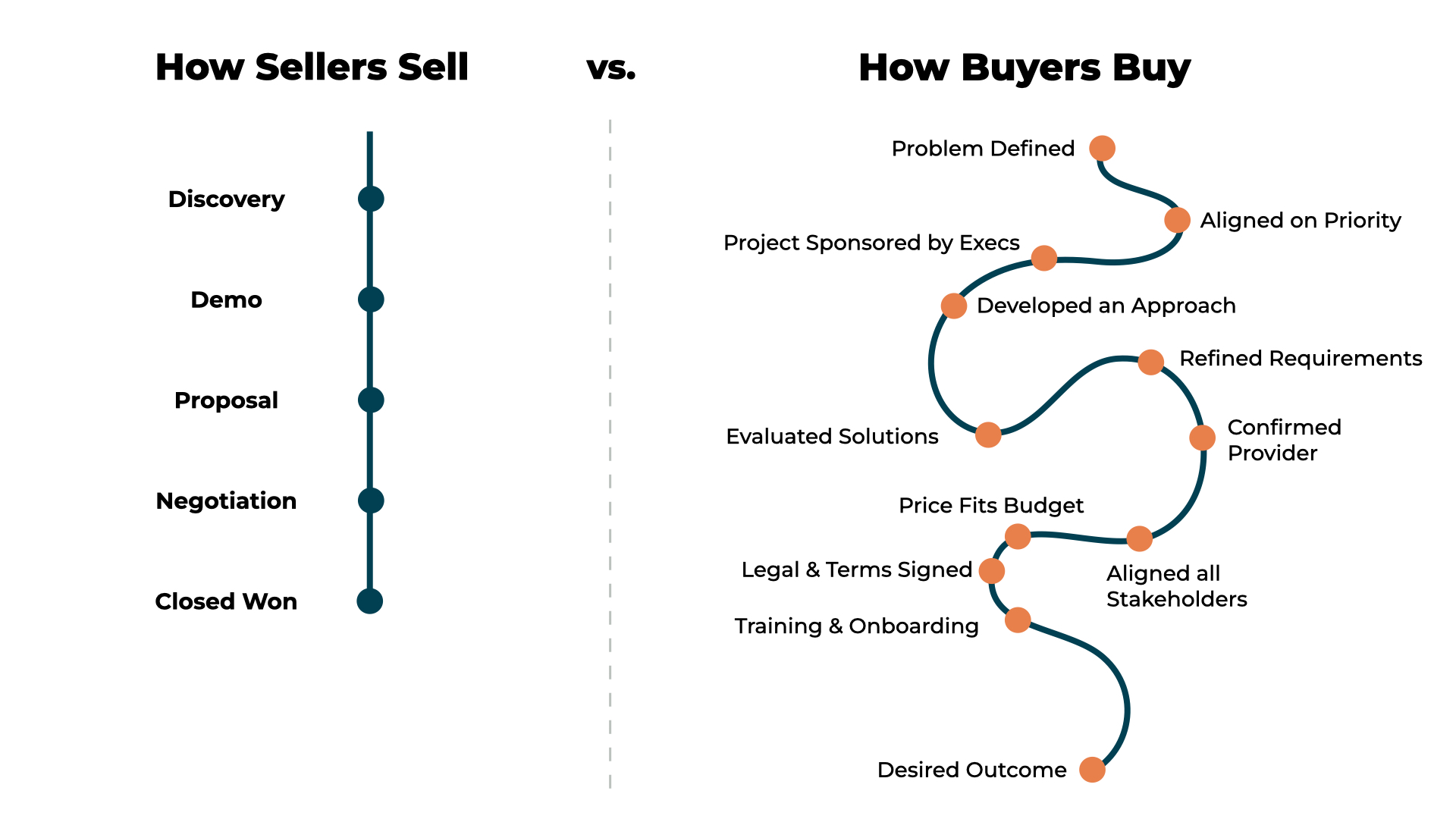
Most noticeably, the sales pipeline looks too simple for a complex deal.
We like to think of our sales pipeline as a one-way flow. For example, once you hit the “proposal” stage, the deal is qualified and won’t return back to a discovery stage.
But this doesn’t align with the way champions navigate deals internally. That one-way flow is more like a river. It’s curving, and often backtracks.
An example of this in the visual above is a buying committee agreeing to an approach, but learning what’s (not) possible while evaluating solutions. So they revisit their requirements, navigate the inner realities of the enterprise, and continue on.
Buyers measure the sales cycle in hours — not months.
Complex deals take time, but it’s not because your champions want that to be the case.
The less hours they have to spend away from their day jobs evaluating a solution — and the more time spent doing their jobs with a better solution in place — the better.
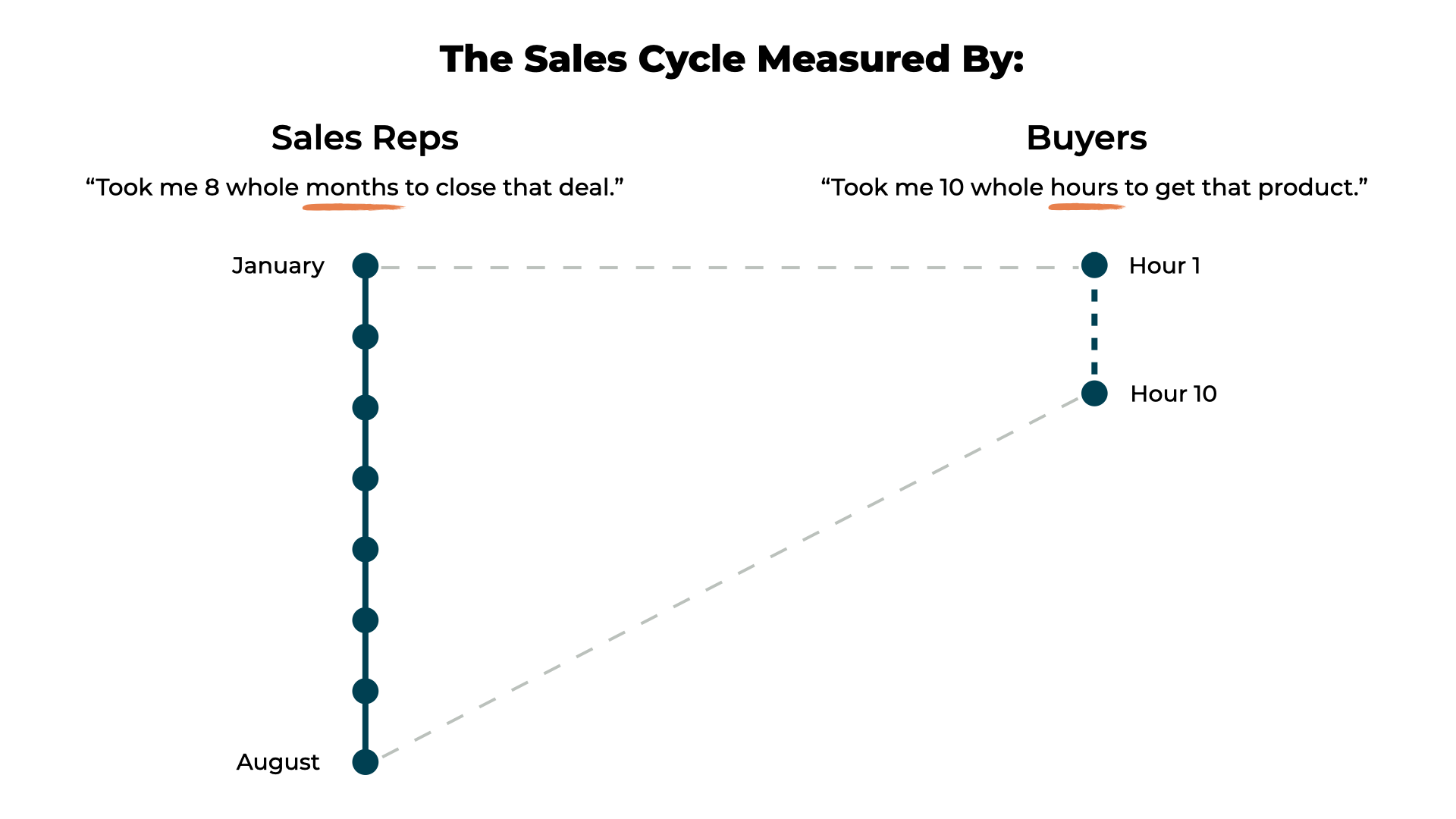
That said, a buying committee will spend more hours evaluating a purchase (which translates to extra months worth of sales cycle), when:
- The solution seems too risky.
- The cost of the problem wasn’t clearly measured.
- The committee continues expanding without a clear owner.
- There’s no consistent communication to keep the process moving.
Tactics that Enable Your Champion’s Internal Sale
With this in mind, here’s a shortlist of tactics that will help you influence your champion's internal sales activities:
- Clear the ’Trust Hurdle’.
- Build a sharp problem statement.
- Adjust the way you build account maps.
- Make sure you’re writing ‘forwardable’ emails.
- Using follow-up’s to help buyers get their job done.
- Share a framework to make their decision process easy.
- Ask better discovery questions to understand their process.
- Build out internal memos and materials to keep the deal moving.
Trying picking one or two of these to start. Put them to work, then master the next.
Designing Pipeline Stages Around Buying Behaviors
There are three sets of activities that happen during any deal:
- Sales Activities. Prepping for a group demo with a sales engineer.
- Mutual Activities. The group demo meeting, with both sellers and buyers.
- Buying Activities. An internal debrief unpacking findings from the demo.
Most sales pipelines are built around the first and second group.
Only the rare sales team sets up exit criteria for their deal stages around the third group.
Now, if you’re a RevOps team reading this, you’re probably grimacing, anxiously, but also nodding. There’s a benefit but also a massive headache with adjusting a CRM’s structure.
Breathe in… I’m not suggesting a full-tilt change to structure and reports you’ve already built. What I am suggesting is that good sellers enable good buying behavior.
So to the extent you can define and attach specific buying behaviors to your existing deal stages, the more effectively you’ll move deals through your pipeline.
Here’s a breakdown of the key behaviors I’d start with:
Stage #1 — Framing a high-cost, high-priority problem in writing.
Every corporate executives is, in the words of Reid Hoffman, “choosing which fires to let burn.” So you may have found “pain,” like a legacy system that end users hate, but that’s not enough.
Instead, you’ve got to dig deeper and frame that pain as a major threat (that’s growing worse).
Exit Criteria: a buyer sends a written problem statement, framed in a way that aligns with your solution, to the rest of their team.
Stage #2 — Multithreaded validation, from different points of view.
Your first contact’s greatest priority isn’t always the same as their company’s. If that’s the case, your deal is hanging by a single thread, which is risky.
So at this stage, you’re looking to become increasingly multithreaded. If you see multiple different roles and contacts all agree the problem is a “big deal,” you’re on the right track.
Exit Criteria: no less than three buyers have read the problem statement, and confirmed it directly aligns with a specific, executive metric.
Stage #3 — A relevant executive sponsors a new project.
Next, the executive whose metric is impacted has to agree that staying the course is too costly. They need to change something, so they dedicate resources to evaluate that something.
Note, this step can also come after Stage #1. If your first point of contact is an executive, they’ll refer you to their team, which is Stage #2 above.
Exit Criteria: the executive tasks their team with evaluating and recommending a new course of action (bonus points if there’s a “trigger phrase” created for the project).
Stage #4 — The entire buying committee agrees on an approach.
Cue the opinions. This is where the consensus-based sale kicks in. It’s also the stage that most sellers skip past, believing that “doing something” means “buying X software / service.”
The approach the buying committee settles on will either be building, buying, or partnering. If they choose buying, this is where you’ll work to influence their requirements (and if possible, avoid a competitive search altogether).
Exit Criteria: the buying committee agrees to buying an external solution, with a specific set of requirements that align with your solution.
Stage #5 — The buying committee confirms you’re their provider of choice, with a scope.
You never want to negotiate terms until you’re confirmed as the provider of choice. Meaning, the buying committee isn’t evaluating others, because you can deliver what they can't. (If that’s not the case, you’ll be bidding — not negotiating — and the prize always goes to the lowest bidder.)
You also want to ensure all stakeholders (IT and security, for example) signed off, and you’ve locked in a specific scope of work.
Exit Criteria: the buying committee confirms they’ve stopped discussions with others, and confirm all have weighed in on a final scope of work.
Stage #6 — A compelling event begins driving your close date.
The most effective form of urgency is internal to the a buying team. It’s not manufactured by quarter close or discounts. It’s driven by a desired outcome with a natural timeline attached.
Of course, this point should be raised and in view throughout the full sales cycle. But here, you’re going a step further by attaching specific dates to the steps you’ll need to complete — like pricing, procurement, and commercials.
Exit Criteria: the buying team sets their target onboarding date, based on a desired outcome, and agrees to a backdated set of tasks to get them there.
Stage #7 — Pricing, procurement and commercial terms finalized.
You should be sharing your pricing model much earlier in the sales cycle. But at this stage, you’re looking for buyers to share internal documents confirming your deal on paper.
When you see confirmation that redlines are accepted, and commercial terms are locked in, pricing agreement carries far more weight. Any earlier, general agreement to your pricing is still “squishy,” and could change.
Exit Criteria: dried ink accepting all terms of your deal.
At this point, most sales pipelines will call the deal ‘Closed Won.’ However, remember that for your champion and their team, the customer journey is just beginning.
So make sure that any timelines you build with them don’t end in a contract. Walk them out through implementation and onboarding, to their desired outcome.
FAQ's on:
Why stop now?
You’re on a roll. Keep reading related write-up’s:
Draft with one click, go from DIY, to done-with-you AI
Get an executive-ready business case in seconds, built with your buyer's words and our AI.
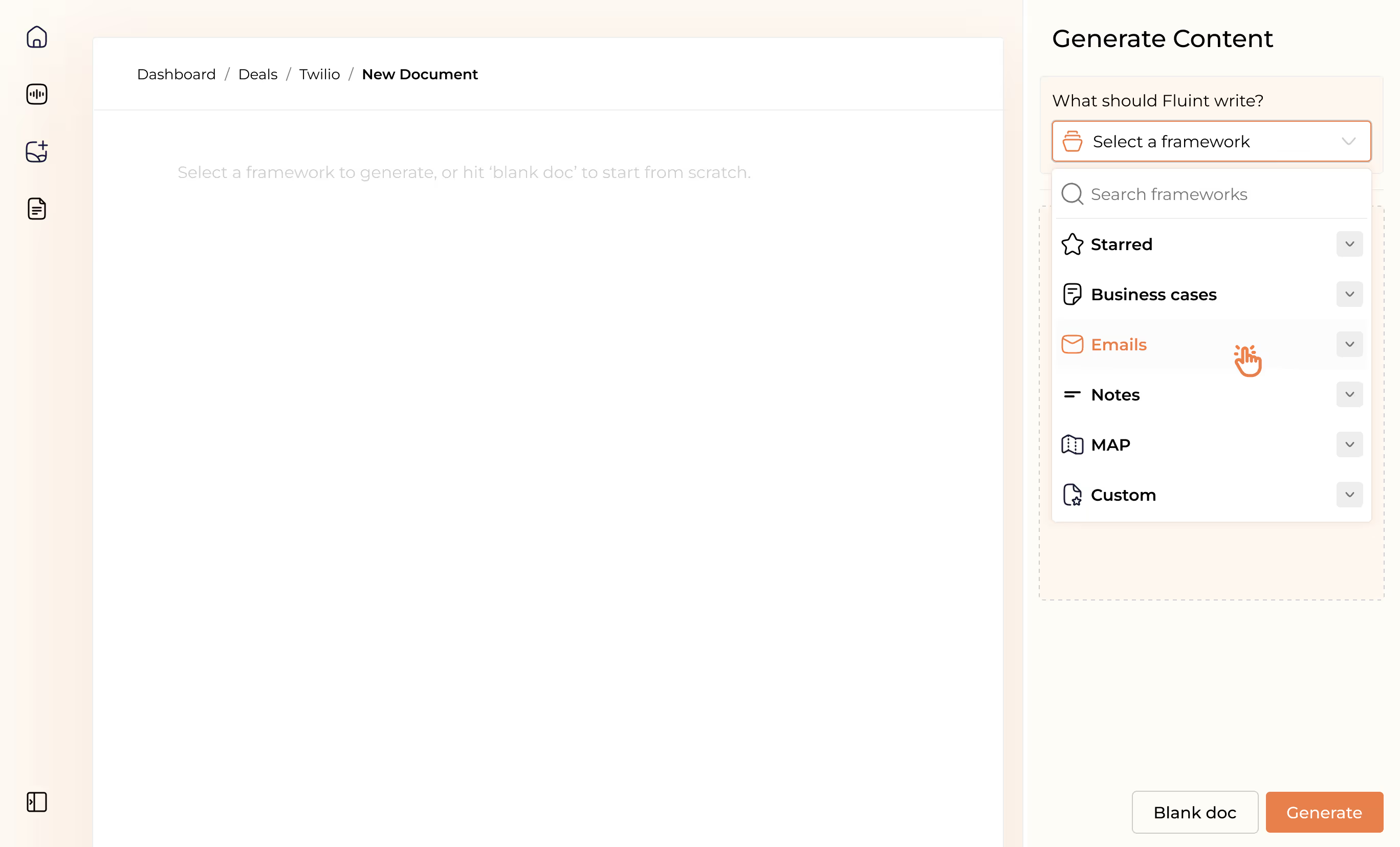
Meet the sellers simplifying complex deals
Loved by top performers from 500+ companies with over $250M in closed-won revenue, across 19,900 deals managed with Fluint

Now getting more call transcripts into the tool so I can do more of that 1-click goodness.



The buying team literally skipped entire steps in the decision process after seeing our champion lay out the value for them.


Which is what Fluint lets me do: enable my champions, by making it easy for them to sell what matters to them and impacts their role.




